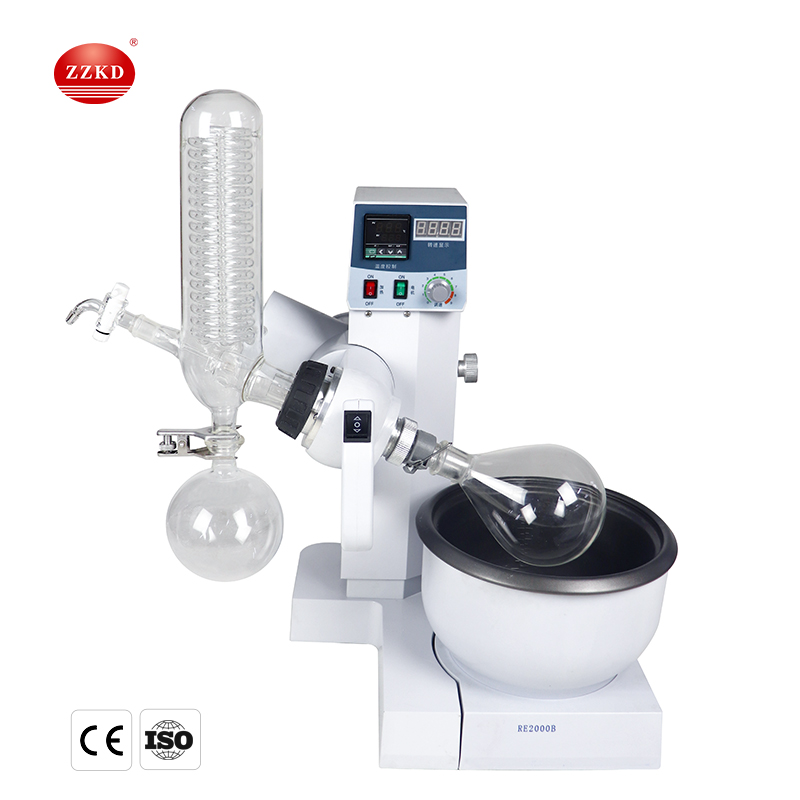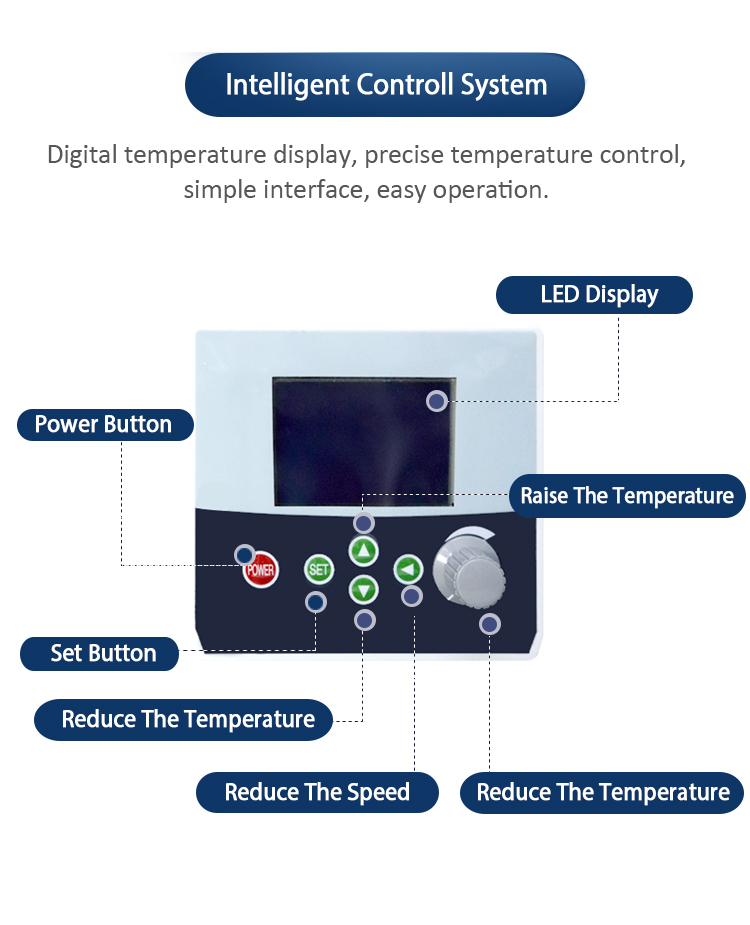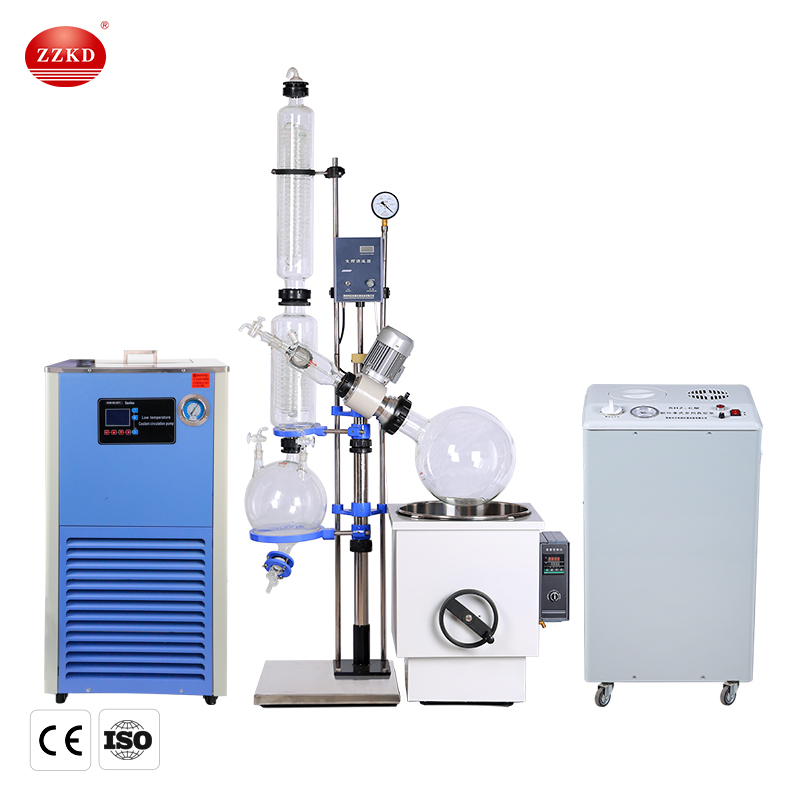What Is The Purpose Of The Rotary Evaporator
The basic principle of the mini rotary evaporator is vacuum distillation, that is, under reduced pressure, when the solvent is distilled, the distillation flask is continuously rotated. Rotary evaporators are mainly used for continuous distillation of large quantities of volatile solvents under reduced pressure. In particular, the liquid obtained during the extraction concentration and the distillation of the chromosome separation can separate and purify the reaction product. What is the purpose of the rotary evaporation? A mini rotary evaporator is an ideal essential basic instrument for the chemical industry, pharmaceutical industry, colleges, and universities, and scientific research laboratories for manufacturing and analysis experiments, concentration, drying, recycling, etc. The steps used to extract traditional Chinese medicine preparations and caffeine by the rotovap for sale are described in detail below.

Traditional Chinese Medicine:
In the pretreatment process of Chinese patent medicine preparations, purified water or ethanol with a certain concentration is usually used to extract Chinese patent medicines. For the prepared licorice, rhubarb, angelica, etc., a rotary evaporator can be used to recover the solvent. The rotary evaporator works in a vacuum state. It uses a constant temperature heating bath to rotate at a constant speed, so that dirt is not easily formed in the medicine bottle, and the heat transfer effect will not be affected. At the same time, the material forms a large-area film on the bottle wall, which greatly improves the evaporation efficiency of the solvent. Therefore, the rotary evaporator is especially suitable for the concentration of traditional Chinese medicine preparations that are easily decomposed and volatile at high temperatures.
Instructions:
1.Turn on the low-temperature coolant circulation pump. Be sure to press the power button and then press the cool button, and start the cycle after the temperature is reduced to the desired temperature.
2.2. Turn on the water pump to circulate the water.
3. Install the distillation flask and secure it with clips. Turn on the vacuum pump and start to rotate after a certain vacuum.
4. Adjust the altitude and rotation speed of the distillation flask, and set the appropriate water bath temperature.
5. After steaming, stop the rotation first, then ventilate, then stop the water pump, and finally remove the distillation flask.
6. Stop the low temperature circulating pump, stop the water bath heater, turn off the water pump to circulate the water, pour the solvent into the receiving bottle and wash the receiving bottle.

After using the rotary evaporator, use a clean cloth dipped in purified water to clean the interface of the rotary evaporator. According to the evaporation operation procedure, rinse the rotary evaporator with water repeatedly until there is no residue, and use a suction bottle to extract the residual liquid in the evaporation bottle. Turn off the vacuum and scrub the outside of the rotary evaporator with purified water. Seal all the mouths with plastic bags, hang up the cleaning signs, and set them aside.
Features of using rotary evaporator for traditional Chinese medicine preparations:
(1) The equipment structure is reasonable, the evaporation area is large, the evaporation efficiency is high, and the operation is stable;
(2) The internal space of the evaporation chamber meets the needs of concentrated liquid sedimentation and separation;
(3) The equipment has good adaptability and can be used for the concentration and evaporation of various liquid medicines;
(4) The structure is simple, the operation and maintenance are convenient, the production volume is large, the process requirements are met, and the quality is stable;
(5) Small powered consumption, energy-saving, environmental protection, and energy-saving.
Rotary evaporator to extract caffeine:
Caffeine, also known as caffeine, is an alkaloid that exists in nature in plants such as coffee, tea, and cocoa. Caffeine is a central nervous system stimulant that can temporarily drive away drowsiness and restore energy, so people sometimes choose to consume caffeine to refresh their minds when they are engaged in mental tasks such as thinking, reading, and meetings. Extracting caffeine from tea leaves is a classic organic chemistry experiment. To extract caffeine, methanol is used as the extractant, liquid-solid continuous extraction is carried out in an extractor, and then the solvent is evaporated and concentrated by a rotary evaporator to obtain a crude product, which is finally purified by sublimation.

Experimental procedure flow:
(1) Turn on the gas path and power supply of the solvent extractor, set the extraction conditions, and clean the flow path of the extractor. The tea leaves were added to the extraction tank and extracted with methanol as solvent. After extraction is complete, replace the extraction tank with a flush tube, then clean the instrument flow path.
(2) Start the low-temperature cooling circulation pumps. After the cooling liquid temperature is lower than 15, connect the round-bottomed flask to the rotary evaporator, turn on the vacuum water pump, start the rotary evaporator, gradually raise the temperature of the rotary evaporator to 60, spin out the methanol solvent, and wait until there is no liquid in the condenser for a long time. Stop heating when dripping, slowly turn the cock of the rotary evaporator to connect to the atmosphere, and take out the round-bottomed flask after the pressure of the distillation device is balanced.
(3) Transfer the crude product and powder to a beaker, place a filter paper with many small holes on it, support the filter paper with a stand, 1-2 cm from the bottom of the beaker, and place a flask with cold water on the beaker. In this way, the beaker is divided into two spaces by filter paper. When the beaker is heated, the temperature in the lower space is higher and the caffeine sublimates. The temperature in the upper space is low, where the caffeine condenses. Sand bath heating is used, the temperature of the controller is 180~190 degrees, and it can be gradually increased to about 210 degrees in the later stage of the experiment. When the surface of the filter paper sublimates and no longer produces white needle-like crystals, the heating is stopped. After the experiment, when the system temperature has dropped to room temperature, remove the beaker and collect the product.
(4) After the beaker has cooled, remove the filter paper and carefully remove the caffeine attached to the paper.
The rotary evaporator is an indispensable tool and equipment for evaporation, concentration, crystallization, drying, separation, solution recovery and other processes in scientific research and production process of medicine, chemical industry. biological products and other industries. It is developed by applying the principle of constant temperature heating and thin film evaporation under the condition of vacuum and negative pressure.


